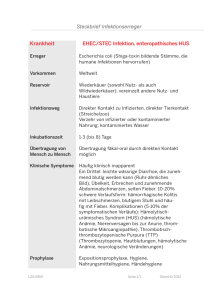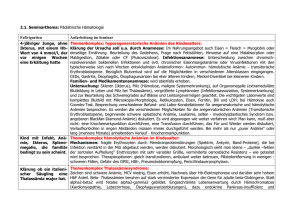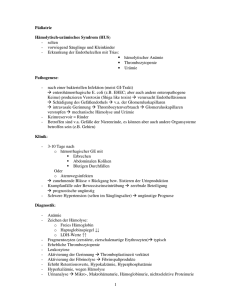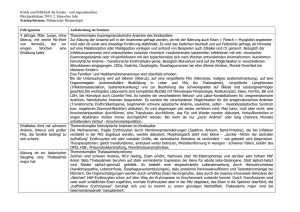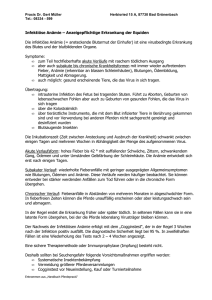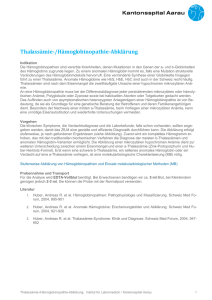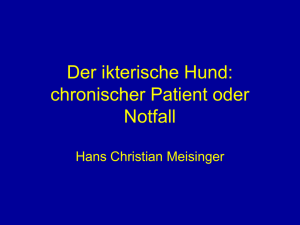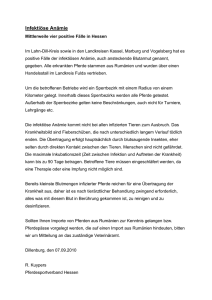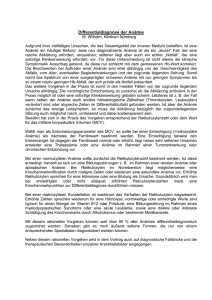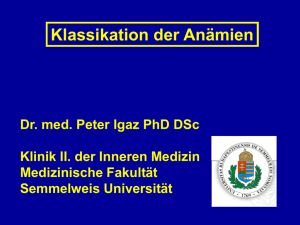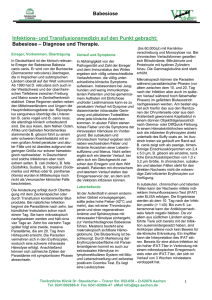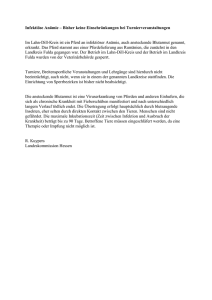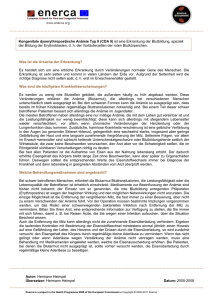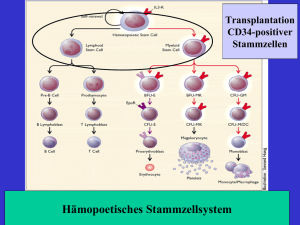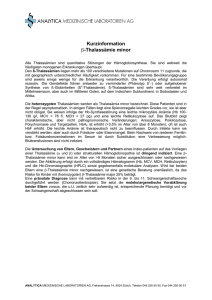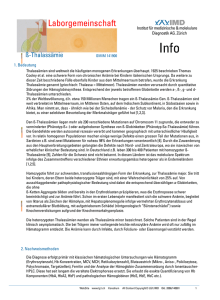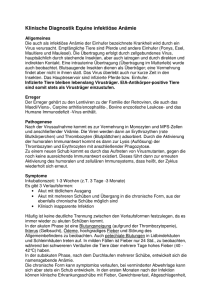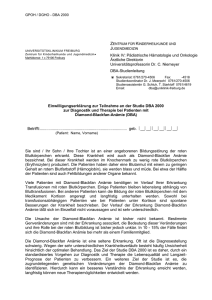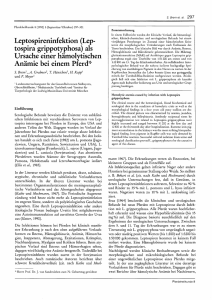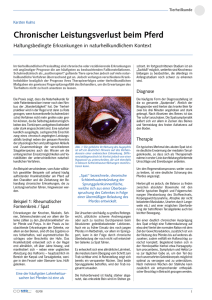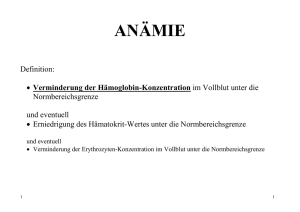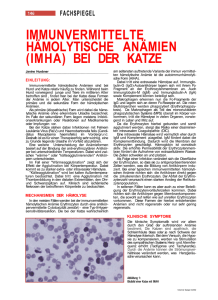Congenitale nicht-sphärozytische hämolytische Anämie (CNSHA
Werbung
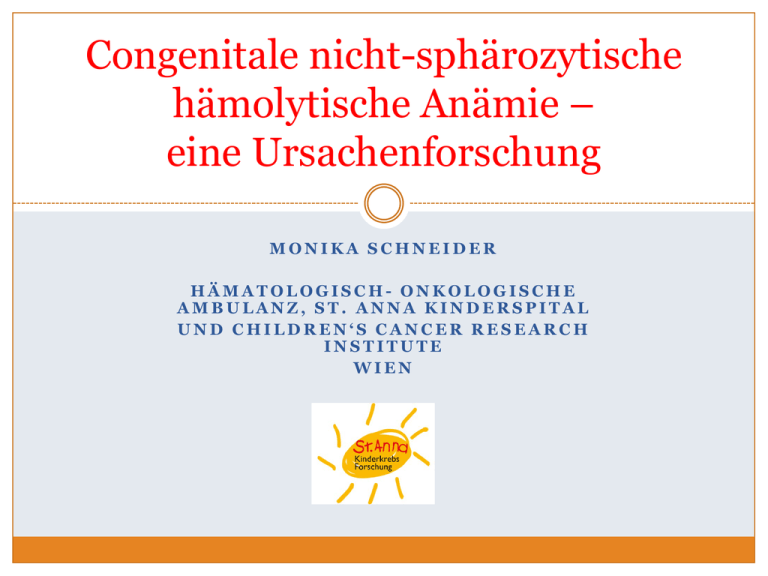
Congenitale nicht-sphärozytische hämolytische Anämie – eine Ursachenforschung MONIKA SCHNEIDER HÄMATOLOGISCH- ONKOLOGISCHE AMBULANZ, ST. ANNA KINDERSPITAL UND CHILDREN‘S CANCER RESEARCH INSTITUTE WIEN Problem Angeborene transfusionsabhängige normochrome, normozytäre, Coombs-negative hämolytische Anämie Negative Familienanamnese Keine ausreichende Diagnostik vor Beginn der Transfusionstherapie Fall: 2 Jahre alte Patientin 2. Kind österreichischer, nicht konsanguiner Eltern, unauffällige Schwangerschaft 40. SSW, Spontangeburt, Geb. Gew. 4035g Ikterus gravis neonatorum: Unkonj. Bili 21.6 mg/dl Coombs und Rh- Inkompatibilität neg. Austauschtransfusion 5 h postpartal Phototherapie Pfortaderthrombose Fall Hb-Elektrophorese und Hämoglobinopathie - Genetik negativ FACS –5 ME Messung und ErythrozytenSchlüsselenzyme nicht konklusiv da posttransfusionell Eltern: Hämoglobin und Reti im Normbereich Pyruvatkinase Aktivtiät der Patientin und der Eltern 5bp Deletion: c.-88_-84delTCTCT -119 gggtggcctactgggtgtgccccttttctcttctctctctcccttcgata PKR-RE1 -69 -19 GATA-1 agaccagcagttttgtcatcctctccctctcattccatggtcccgcagc ccaggcccacactgaaagc Pyruvatkinasemangel Erstbeschreibung 1961. Häufigste Ursache einer angeborenen, nicht-sphärozytischen hämolytischen Anämie und häufigster Glycolysedefekt Prävalenz: 1:20.000 Autosomal rezessiv; homozygot /compound heterozygot >240 Mutationen PKLR Gen Variables klinisches Bild: Hydrops fetalis Hyperbilirubinämie mit Austauschtransfusion Transfusionsbedürftige chronische Hämolyse Moderate bei Infekten gesteigerte Hämolyse Stabilisierung im Erwachsenenalter Diagnose PKD PK-Enzymaktivität = Goldstandard Falsch normal: Retikulozytose, Posttransfusionell PK Aktivität im Vergleich mit anderen Erythrozytenenzymen Sequenzierung PKLR-Gen des Patienten: limitierend bei compound heterozygotem Befund, großen Deletionen oder Intron-Mutationen Analyse der Eltern Therapie Transfusionstherapie: - Chronisch : Nadir bei Hb 7-9 mg/dl - Intermittierend Splenektomie: Hb Anstieg 1-3 mg/dl, Nutzen/Risiko Supportiv: Folsäure, Chelattherapie Impfungen, Penizillinprophylaxe Pharmakologischer PK-Aktivator AG-348 „If you can‘t analyse the patient, analyse the parents“ DANKE !
